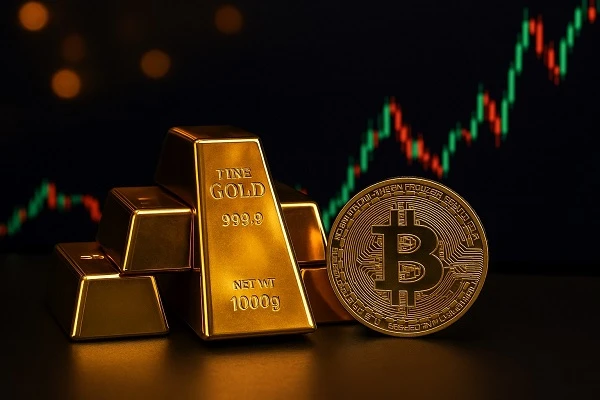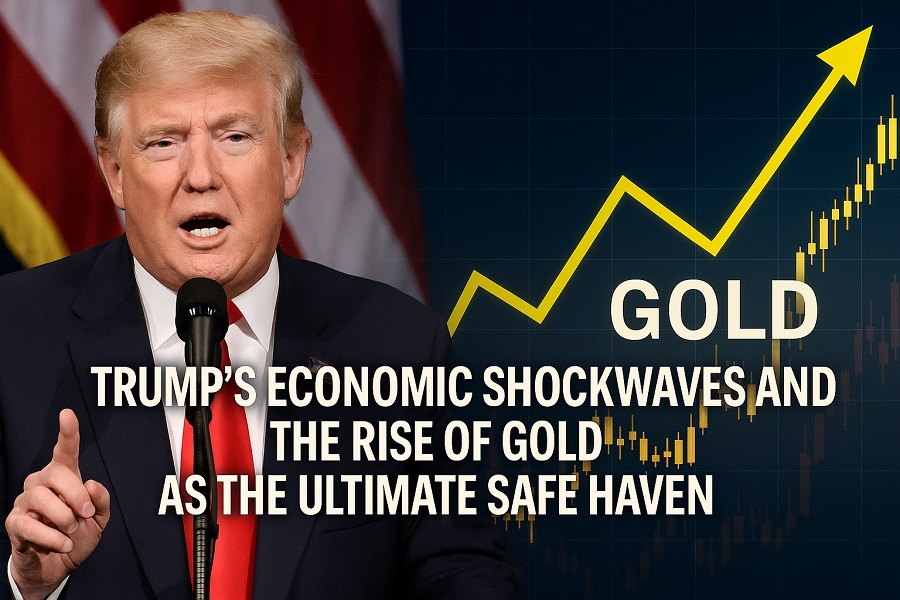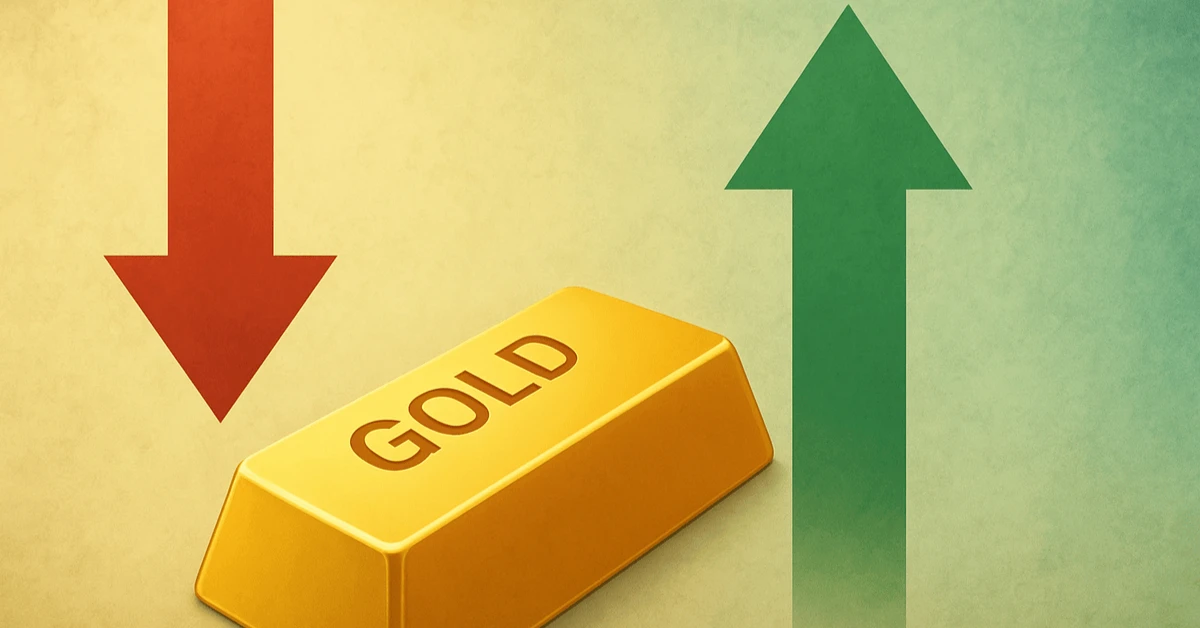Last Updated: July 4, 2025
Why Gold is the New Bitcoin in 2025

Once the poster child of digital revolution and decentralized wealth, Bitcoin is now seeing its throne challenged—not by another cryptocurrency, but by something ancient: gold.
In 2025, the financial world is witnessing an unexpected trend reversal. Gold, the age-old symbol of stability and wealth, is reclaiming its spotlight. As global uncertainty rises and crypto markets wobble under the weight of regulation and volatility, investors are increasingly turning to gold—not just as a hedge against inflation, but as a long-term, reliable store of value.
The Fall of the Bitcoin Dream?
Let’s take a step back. In 2017 and again in 2021, Bitcoin soared to historic highs, creating overnight millionaires and launching a new wave of digital finance. Crypto was being touted as “digital gold,” a modern safe-haven asset immune to government manipulation and central bank inflationary policies.
But the last couple of years haven’t been kind to Bitcoin. While it still has its enthusiasts and long-term HODLers, mainstream adoption has stalled, and governments around the world are cracking down on its unregulated nature. Add to that a series of high-profile exchange collapses—think FTX, Celsius, and BlockFi—and you get a market that's no longer considered “safe.”
In contrast, gold has been doing something it does best: quietly gaining value, offering security during turbulent times, and proving its mettle (pun intended).
Global Economic Uncertainty is Gold’s Best Friend
By 2025, the world economy is dealing with multiple flashpoints:
- U.S.-China trade tensions have reignited
- Europe is battling stagflation and energy insecurity
- Developing nations are struggling with record debt levels
- Central banks worldwide are hoarding gold like never before
These global stressors make gold more attractive. Unlike Bitcoin, which still remains highly volatile, gold has a centuries-old reputation for weathering financial storms.
"In uncertain times, people don’t want innovation. They want security. And that’s why gold is back," says Rajesh Kothari, a Mumbai-based wealth advisor.
Gold’s Record-Breaking Rally
In April 2025, gold broke its all-time record, hitting over $2,600 per ounce. Analysts now predict that it could touch $3,000 before year’s end. What’s driving this rally?
- Institutional Shift: Pension funds and sovereign wealth funds are increasing gold allocations, reducing crypto and even equities exposure.
- Central Bank Buying: Countries like China, India, and Turkey have massively increased gold reserves to protect against dollar fluctuations.
- Retail Interest: Millennials and Gen Z are showing interest in fractional gold ownership through digital platforms—ironically using the blockchain to invest in the metal Bitcoin was meant to replace.
Gold vs. Bitcoin: The Key Differences in 2025
| Aspect | Gold | Bitcoin |
|---|---|---|
| Volatility | Low | High |
| Regulation | None | Increasingly regulated |
| Historical Trust | Thousands of years | Just over a decade |
| Physical Asset | Yes | No |
| Use in Crisis | Accepted globally | Limited acceptance |
The Digital Gold Narrative Has Reversed
Ironically, Bitcoin was supposed to be "digital gold." But over the years, it has become more of a speculative asset than a stable one. While blockchain technology is still promising, the speculative frenzy has pushed serious investors toward gold’s consistency and predictability.
And while the new generation might not be buying gold bars and storing them in lockers, they’re certainly investing through tokenized gold, gold ETFs, and digital vault services, which combine the security of physical gold with the convenience of modern technology.
Why Gold is Winning the Trust War
Gold isn’t just winning because Bitcoin failed. It’s winning because it’s becoming more accessible, more trustworthy, and more relevant in a world that’s desperate for financial safety. Key reasons include:
- Proven Track Record: Gold has preserved wealth for centuries, through empires, wars, and economic collapses.
- Geopolitical Neutrality: Gold isn’t tied to any country or corporation. It doesn’t need electricity or internet to exist.
- Liquidity: Gold can be sold almost anywhere in the world, instantly.
Who’s Investing in Gold in 2025?
Some surprising new groups have joined the gold rush:
- Tech Entrepreneurs: Once gung-ho about crypto, many are now diversifying into gold.
- Environmental Activists: Pushing for ethically-sourced gold over high-energy crypto mining.
- Average Millennials: Now buying gold digitally in small amounts via mobile apps.
Conclusion: Is Gold the New Bitcoin? Not Exactly, But Close.
Let’s be clear: gold and Bitcoin are fundamentally different. One is physical, one is digital. One has been valued for thousands of years, the other barely two decades. But when it comes to trust, safety, and long-term value in 2025, gold has emerged as the top choice.
Bitcoin isn’t going anywhere. It will likely evolve and regain strength. But for now, investors seeking a reliable haven in a chaotic world are going back to basics—and that means gold.
It’s not just the return of gold—it’s the rebirth of trust.
The Verdict
If you’re an investor or simply someone looking to protect their wealth, now is the time to seriously consider gold. Whether through traditional bars or modern tokenized versions, gold in 2025 is more accessible, more essential, and more powerful than it’s been in decades.
Gold isn’t just back. It’s back with a vengeance.
You May Also Like:

How Pakistan’s Surplus Electricity Could Spark a Surge in AI Data Centres and Bitcoin-Mining Start...

Trump’s Economic Shockwaves and the Rise of Gold as the Ultimate Safe Haven...

Will Gold Hit the Ground Further or Will It Hit the Sky Again with a Harsh Stroke?...

Vivo Y400 Price, Specs & Review – The New Budget Powerhouse of 2025...

Anisimova vs Swiatek: A New Queen of Wimbledon Awaits in 2025 Showdown...

You Could Be Fined €3,000 Over Your Burqa — Italy’s New Bill Explained...

Zohran Mamdani’s Viral Rise: How a New York Lawmaker Sparked Global Debate on Identity and Politic...
